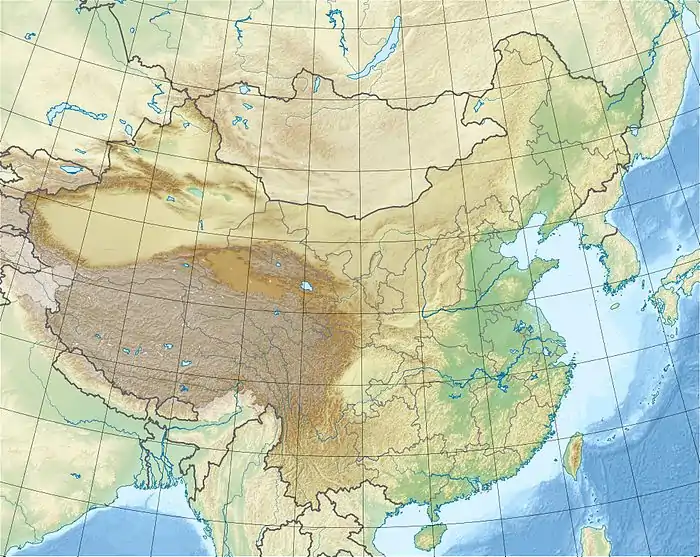Tusi Sites
The Tusi Sites (Chinese: 土司遗址; pinyin: Tǔsī Yízhǐ) refer to three of the ancient Tusi sites in China that were designated by the UNESCO as World Heritage Sites on July 3, 2015. It is the 48th World Heritage Site in China.[1]
| UNESCO World Heritage Site | |
|---|---|
| Location | China |
| Criteria | Cultural: (ii), (iii) |
| Reference | 1474 |
| Inscription | 2015 (39th session) |
| Area | 781.28 ha (1,930.6 acres) |
| Buffer zone | 3,125.33 ha (7,722.9 acres) |
| Coordinates | 28°59′55″N 109°58′1″E |
 Location of Tusi Sites in China | |
Background
The tusi was a tribal leader appointed as officials by the imperial government in imperial China. It is a political system adopted by Chinese emperors to govern ethnic minority regions in south-central and southwest China. The system was used for a thousand years.[2][3]

Process
On July 3, 2015, the three Tusi sites were added to the World Cultural Heritage List during the 39th session of the World Heritage Committee in Bonn, Germany. The committee said the Tusi system aimed at unifying national administration while simultaneously allowing ethnic minorities to retain their customs and way of life.[4][5]
Sites
| UNESCO Inscription No | Name | Location | Coordinates | Area |
|---|---|---|---|---|
| 1474-001 | Laosicheng Tusi Domain | Yongshun County, Hunan | 28°59′55″N 109°58′01″E | Property: 534.24 Ha Buffer zone: 1023.93 Ha |
| 1474-002 | Tangya Tusi Domain | Xianfeng County, Hubei | 29°41′26″N 109°00′19″E | Property: 86.62 Ha Buffer zone: 973.61 Ha |
| 1474-003 | Hailongtun Tusi Fortress | Huichuan District, Zunyi, Guizhou | 27°48′42″N 106°49′01″E | Property: 160.42 Ha Buffer zone: 1127.79 Ha |
- Source: [6]
References
- "China: Ancient Tusi tribal sites added to World Heritage List". International Business Times. 4 July 2015. Retrieved 4 July 2015.
- "Chinese Tusi heritage sites make it to UNESCO list". CCTV. 4 July 2015. Retrieved 4 July 2015.
- "China's Tusi sites listed as world heritage". Xinhua. 4 July 2015. Retrieved 4 July 2015.
- "China Focus: UNESCO recognition of Tusi sites cheered". Xinhua News Agency. 4 July 2015. Retrieved 4 July 2015.
- "China's Tusi Sites Listed as World Heritage". Xinhua News Agency. 4 July 2015. Retrieved 4 July 2015.
- "Tusi Sites". UNESCO. Retrieved 4 July 2015.

